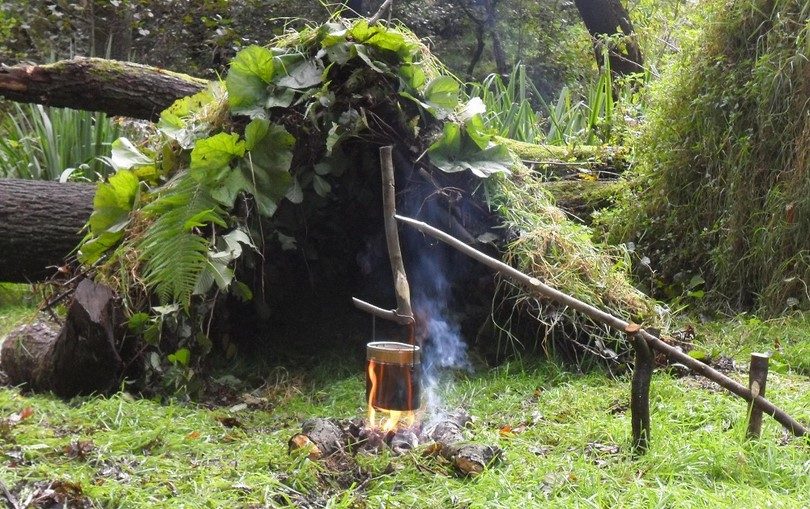Important Uses for Leaves in Survival Situations

Leaves for Shelter

Leaves have excellent insulating properties, and they make the ideal material
for roofs, walls or covers. You can fill them into gaps on your makeshift
shelter, they can be used as insulation from the elements, and they provide
for excellent camouflage. You should seek small branches with leaves attached
for roofing material and simply stick the ends underneath the frames of your
shelter row by row. You can mix dry leaves with dirt and use it as pitch, or
you can stuff moist leaves between cracks and crevices. The possibilities
are endless as long as you have enough on hand along with a little bit of creativity.
Leaves for Cooking
Large, green leaves are ideal for wrapping around food items before they
are cooked. You can put meats, fish, veggies and eggs inside, wrap them up
and tie off with small twigs to hold everything together. Simply place them
around the edges of your fire and allow the steam created inside to cook your
food thoroughly. You may need to practice in order to get a feel for where to
place the items in relation to the fire and to determine cook times for various
foods. When finished, simply remove the twigs, unwrap the leaves and enjoy
your meal.
Leaves for Cushioning

Moist, green leaves can be used for insoles in shoes and boots, providing
you with additional cushioning and support. Simply lay them flat along
the insides of your footwear in multiple layers. Just make sure that you
remove any hard or fibrous membranes and stems beforehand in order to
prevent the irritation, discomfort or potential blistering of your feet. Leaves
can also be used for bedding material, especially if you are sleeping on hard
or uneven ground. Simply take a bunch of leaves, remove the stems and
lay them flat underneath where you will be sleeping. You can add as many
layers as you like, and they will also provide a good degree of insulation
during cold nights.
Bandages

Leaves can also be used for rope as well as bandages. You can take long,
thin leaves and peel off strips to fashion into rope or ties, and they are
surprisingly strong, especially if you are using fresh and green ones right
from the plant. You may need to weave a couple of strips together in order
to provide added strength, but they will make ideal solutions for tying things
together. Turning a leaf into a bandage is easy as well. Simply wrap a flat,
moist leaf around the wound and use some smaller strips to secure it in place.
Fire Starter

And, don’t forget that dried leaves make the ideal material for starting fires.
They can be used in conjunction with twigs and dried grass as tinder to help
get even the most difficult fires going. These are just a few examples of the
endless possibilities that leaves can offer you during a survival situation. Take
some time to think about how you can put this natural resource to work for
you the next time you are out in the field.
